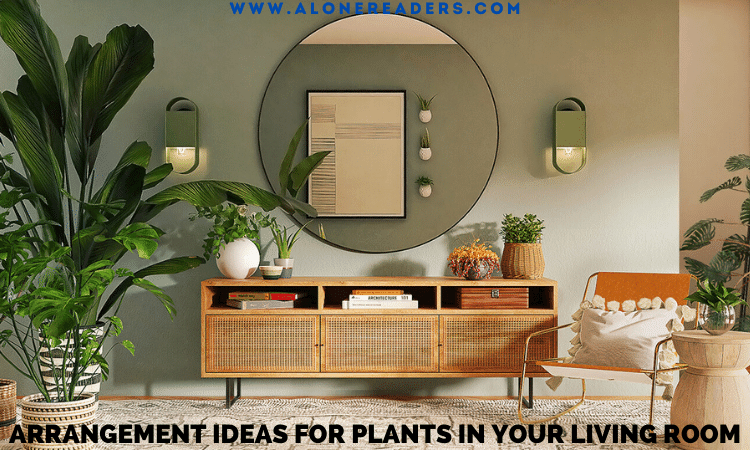
Your living environment would look better with plants as accessories. They can freshen up your space with vibrant colors and lovely scents in addition to their ability to reduce tension. You can make a room feel comfortable and welcoming with the correct plant arrangement. We have what you need, whether you only want a little bit of greenery or want to saturate your entire living space with plants.
Select various-sized plants
Use various plant species to provide interest. Change up the sizes of the plants you combine together to make your display more interesting. Consider placing a bigger plant, like a fiddle leaf fig, in a free corner and smaller plants, like succulents, on an end table or a windowsill.
Make an odd number of plant arrangements
In groups of 3, arrange plants throughout your living room. The "rule of three" can be used to combine plants in odd numbers together for a more striking appearance. Alternatively, choose larger arrangements and group 5, 7, or even 9 plants together.
To add interest, vary the plant heights within each group. For example, consider placing a big plant in the center of 2 smaller ones.
With various leaf shapes, add texture to the picture
To prevent them from combining together, pick a range of plant types. Choose a few plants with thick, long leaves, a few with broad, huge leaves, and so forth. To combine various textures, you might, for instance, arrange enormous leafy palms next to little, form-fitting cactus.
Use a variety of pot types to create dimension
Add some color and texture to your display with pots in different colors. Pick pots with bold patterns or colors to create a statement. Choose a single hue in a variety of materials or a single material in many shades of the same color for a simpler appearance. Terracotta pots are water-tight and porous, making them a good choice if you have a tendency to overwater your plants.
For indoor plants, ceramic pots are a fantastic solution. Use them as ornamental accents on your tables or shelves. To let extra water drain, choose pots with drainage holes at the bottom. Just make sure that each pot has a saucer underneath it.
Plants in your living room should be arranged at various heights
Use the flooring, tables, shelves, and ceiling. Plants should be spaced out throughout the room rather than all being at the same height. An empty space can be filled by a big potted plant. You can also draw attention by using some hanging plants that cascade over shelves. Plants can be placed under windows, chairs, and other wall décor to create a plant nook.
Use an eye-catching plant to create a centerpiece
To express yourself while cleaning your perspective, pick a tiny plant. To make it the center of attention in your living area, put it on a coffee table. Consider using the blue star fern for a daring effect.
Match the aesthetic of the room with your plants
Make sure that the plants and pots you choose go well with the room's color and design. The color of your room's flooring, paint, artwork, and furniture should all be taken into consideration. Consider the style as well. To go with a contemporary style, use sleek, modern plants and containers, or more conventional choices if your home has a traditional vibe.
Place plants in a central location to improve your mood
Use the calming effects of plants to relieve stress and ease anxiety. Plants are not only attractive, but they also provide practical advantages. To help filter your air, choose options like the snake plant. For aromatherapy, use fragrant plants like eucalyptus or lavender.
Some plants even have therapeutic qualities. Aloe vera plants, for instance, can be used to treat skin irritations. Squeeze the gel-like fluid from a big outer leaf over small burns or rashes.
Select a location that will fulfill your plant's needs
Discover the conditions that will make your plants flourish. To find the care instructions for your plants, look at the label or quickly search the internet. Remember to take into consideration the temperature, the amount of sunlight, and how much water your plant requires. A recent study shows that the ideal temperature range for your houseplants is 69.8 to 80.6 °F (21.0 to 27.0 °C).
Place your plants in an area that prevents hazards
Keep your plants out of the reach of young children, pets, and exits. Make sure that no one will trip or run into your plants as a safety measure. Additionally, make sure a houseplant is not poisonous before you buy it by reading the warning label.
Toxic to young children and animals are certain common houseplants like poinsettias, peace lilies, and pothos ivy.
Final Word
Look no further if you've been wondering how to arrange plants in your living room. There are plenty of creative methods to display your favorites in this above guide. Plant décor is a cost-effective way to bring the outside inside and create a welcoming atmosphere.